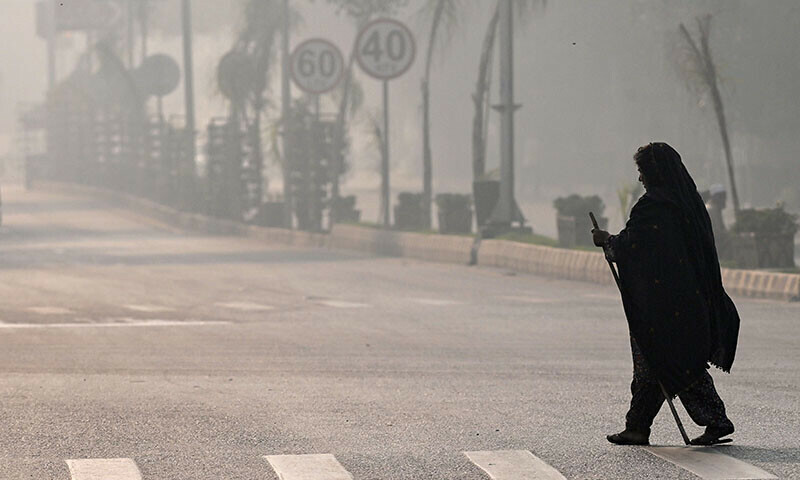
[ad_1]

Air pollution in Lahore soared on Saturday more than 80 times over the level deemed acceptable by the World Health Organisation (WHO), with an official calling it a record high.
The level of deadly PM2.5 pollutants — fine particulate matter in the air that causes the most damage to health — peaked at 1,067, before dropping to around 300 in the morning, with anything above 10 considered unhealthy by the WHO.
“We have never reached a level of 1,000,” Jahangir Anwar, a senior environmental protection official in Lahore told AFP.
For days, Lahore has been enveloped by smog, a mix of fog and pollutants caused by low-grade diesel fumes, smoke from seasonal agricultural burning and winter cooling.
“The air quality index will remain high for the next three to four days,” Anwar said.
On Wednesday, the Punjab Environmental Protection Agency announced new restrictions in four “hot spots” in the city.
The next day, it also ordered all “Schools of Special Education” in Lahore to send their students, who had medical conditions that could get triggered by poor air quality, on a three-month compulsory leave from Friday.
Tuk-tuks equipped with polluting two-stroke engines are banned, as are restaurants that barbecue without filters.
Government offices and private companies will have half their staff work from home from Monday. Construction work has been halted and street and food vendors, who often cook over open fires, must close at 8pm.
Smog is particularly pronounced in winter when cold, denser air traps emissions from poor-quality fuels used to power the city’s vehicles and factories at ground level.
[ad_2]
Source link






